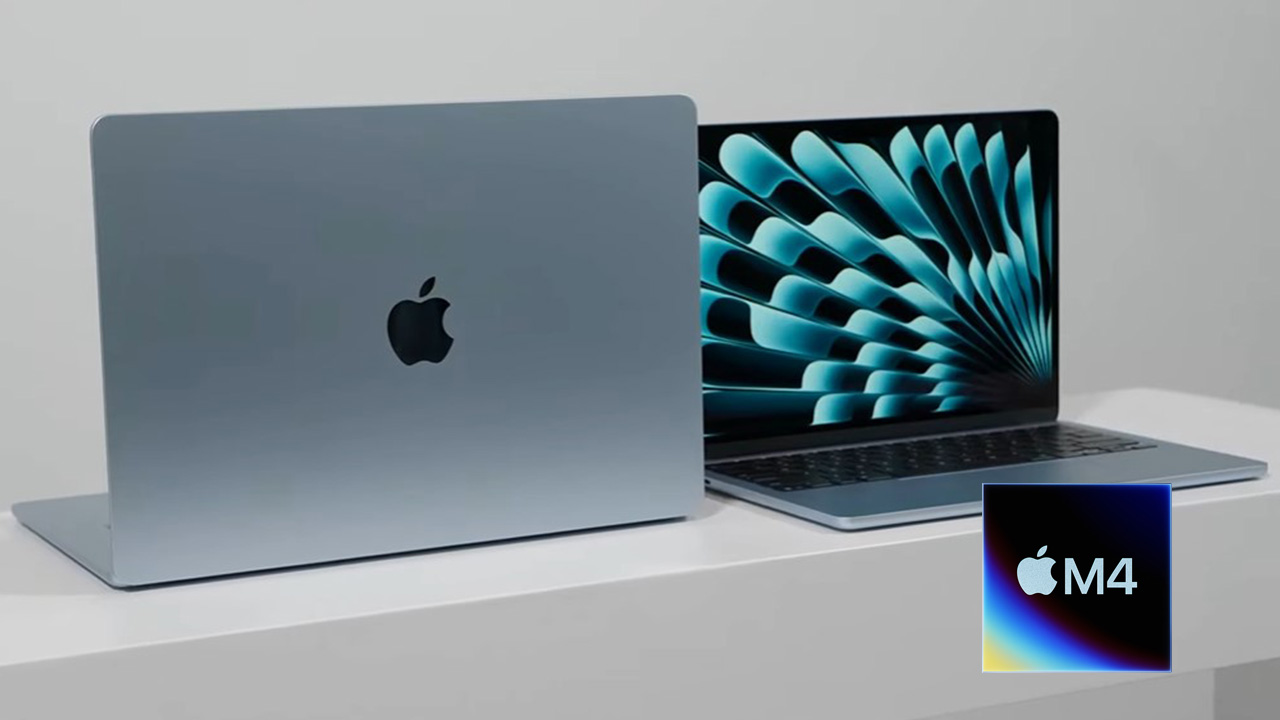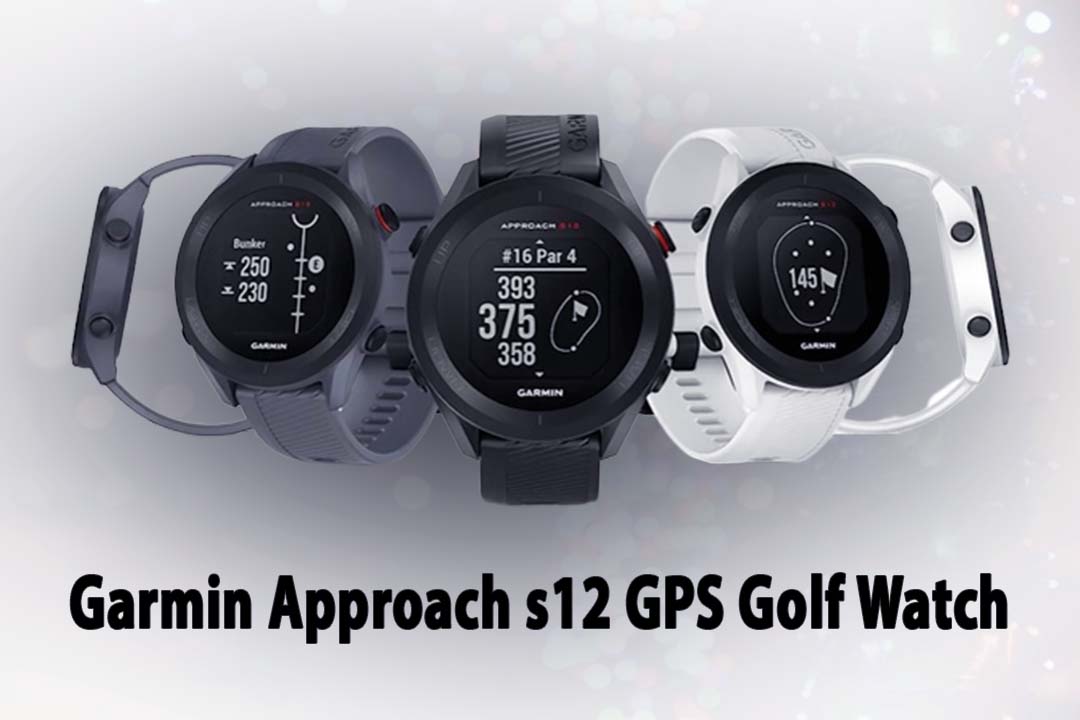iPhone 16 Pro Max Review – Specs, Features, and Performance
I understand the frustration. From a certain perspective, the iPhone 16 Pro Max might seem like just a bigger version of the iPhone 15 Pro Max, but after spending a week with Apple’s latest iOS phone, I can confirm there are substantial and noticeable differences, some of which could fundamentally change how you use your iPhone.
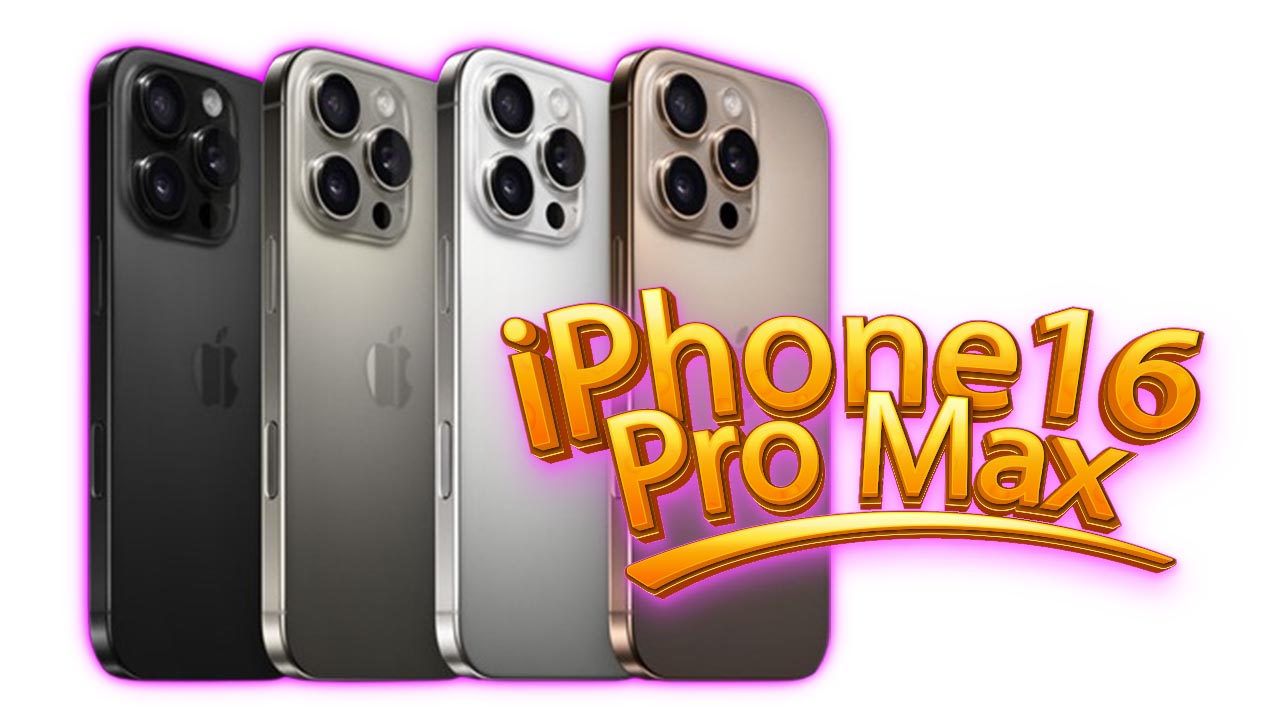
Firstly, the iPhone 16 Pro Max is indeed larger. It sports a slightly bigger titanium body, which makes it six grams heavier than its predecessor. The screen is almost seven inches, and the Super Retina XDR OLED display is more expansive, not just because of the larger chassis. Apple has slimmed down the bezels, providing a vast 6.9-inch display that’s bright and vibrant.
Another significant change is the new button on the right side, located below the power/sleep/Siri button. Although Apple prefers not to call it a button, it functions like one. The recessed Camera Control button is movable with a haptic response that simulates movement with light presses. It also supports gesture recognition. This new button, primarily geared toward photography, will soon offer customizable controls, including one-touch access to Apple’s new Visual Intelligence object identification feature.
Internally, the iPhone 16 Pro Max is powered by the A18 Pro chip, which, while not dramatically different from the A17 Pro, provides a noticeable boost in speed and efficiency. Although most users may not fully utilize its capabilities, Apple’s Pro line of smartphones are clearly designed to live up to their name. The iPhone 16 Pro Max might just be the epitome of a pocket supercomputer.
All this powerful hardware serves as a foundation for Apple’s next major development: Apple Intelligence. However, this new AI feature is still a work in progress. Early users won’t experience much of it unless they install an iOS beta. Features like Writing Tools, an upgraded Siri, summaries of long emails, and photo updates for creating custom memories will be available soon after the iPhone 16 Pro Max’s release, but other capabilities are still forthcoming.
Currently, Apple Intelligence lacks features like image generation, Genmojies, ChatGPT integration, and support for languages beyond English. Siri hasn’t yet shown its anticipated personal context abilities, which could be a game-changer in the AI space. Eventually, Siri with Apple Intelligence will leverage your data to provide more personalized assistance, but this might not be available until later this year or next, which dampens the enthusiasm for the iPhone 16 Pro Max a bit.
If AI isn’t your primary reason for considering this new iPhone, the camera system might catch your interest. While not entirely new, it features a faster sensor behind the 48MP main fusion camera, and the ultrawide camera has upgraded from 12MP to 48MP. Typically, you’ll shoot at 12MP, combining four pixels worth of information into each pixel. The 5x optical zoom remains mostly unchanged, as does the 12MP True Depth selfie camera.
There are plenty of new imaging and audio features to explore. For instance, the iPhone 16 Pro Max supports 4K 120fps video, which can be adjusted in increments for a cinematic feel. There are also new audio mix tools that can enhance audio quality in certain settings, adding a studio-like finish to recordings not captured with a microphone. Additionally, Apple has introduced new image styles and undertone controls, though their usage might not be as widespread as Apple hopes.
Choosing between the iPhone 16 and the iPhone 16 Pro Max is straightforward: you get a Pro Motion display (ranging from 1Hz to 120Hz), a 5x zoom camera, and the most powerful mobile chip Apple offers. The differences between the iPhone 16 Pro and 16 Pro Max are subtler this year. The Pro Max has a larger screen—6.9 inches versus 6.3 inches—and a bigger battery, which provides at least an extra hour of battery life. The 5x tetraprism lens is available on both models, but the iPhone 16 Pro starts with only 128GB of storage, which is worth noting.
In summary, the iPhone 16 Pro Max is impressive. It’s large, powerful, and versatile. I even played a console-level game on it using an Xbox controller, just because I could. The camera takes beautiful photos, clear and color-accurate, even if you don’t explore the new styles and undertones.
Apple Intelligence, accessible through the iOS 18.1 Developer Beta, is a promising start with some intriguing features, but it’s not yet a compelling reason to upgrade. Similarly, the Camera Control button, while promising and sophisticated, faces competition from the existing Action button. Users of the new iPhone 16 models will likely find the Camera Control button useful and wonder how they managed without it. Meanwhile, the Action button may remain underutilized until Apple decides to phase it out.
Apple iPhone 16 Pro Max Specs
| iPhone 16 Pro Max | Details |
|---|---|
| Dimensions: | 163 x 77.6 x 8.25mm |
| Weight: | 227g |
| Display: | 6.9-inch OLED |
| Resolution: | 2868 x 1320 pixels |
| Refresh rate: | Adaptive 1-120Hz |
| Chipset: | A18 Pro |
| Rear cameras: | 48MP main (24mm, f/1.78) |
| 48MP ultra-wide (13mm, f/2.2) | |
| 12MP telephoto (120mm, f/2.8) | |
| Optical zoom: | 5x |
| Front camera: | 12MP (f/1.9) |
| Storage: | 256GB, 512GB, 1TB |
Apple iPhone 16 Pro Max Design
It might seem like Apple’s design strategy for the iPhone is now “Why mess with a good thing?” In many ways, this is true. The iPhone 16 Pro Max doesn’t stray far from the design first introduced with the iPhone 12, but it carries forward numerous changes made over recent generations, including the smoothed-out edges and the new Action button, which replaced the silence switch on the Pro models last year.
The dimensions of the iPhone 16 Pro Max are quite similar to the iPhone 15 Pro Max, though slightly enlarged. It measures 163mm x 77.6mm x 8.25mm and weighs 227 grams. This makes it six grams heavier, 3.1mm taller, and 0.9mm wider than its predecessor. If you’re comfortable with the iPhone 15 Pro Max, you shouldn’t have much trouble adjusting to the 16 Pro Max. While it doesn’t feel significantly larger in the hand, the difference in screen size is noticeable.
On the bottom edge, you’ll find the usual microphone and speaker perforations, along with a USB-C port that supports Thunderbolt 4 data-transfer speeds when used with the right cable. There’s also a speaker slot along the top edge of the display. Combined with the bottom edge speaker, this setup produces clear, room-filling sound—highs are sharp, mids are robust, and bass is surprisingly good for the phone’s size.
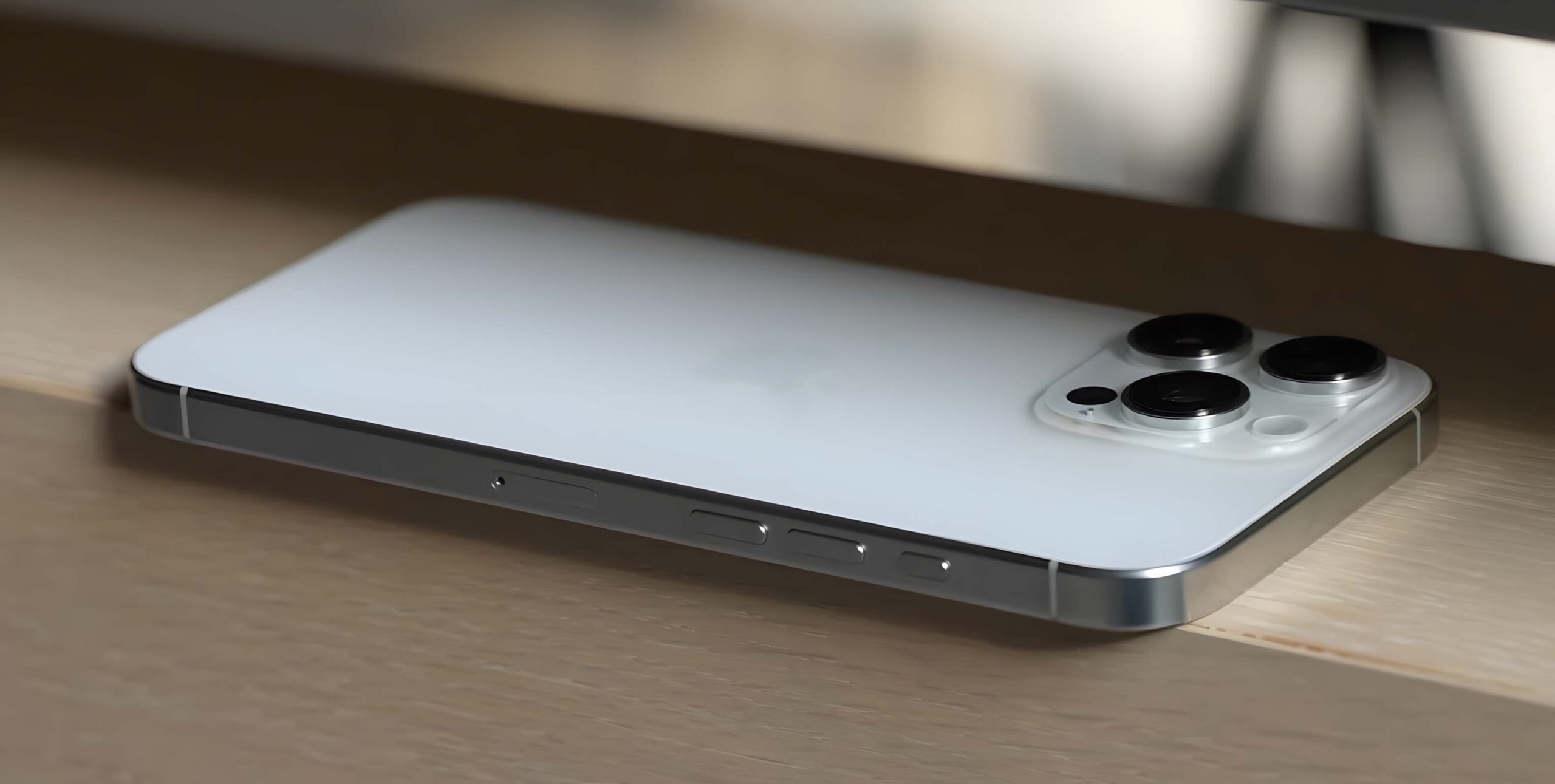
Button placement remains mostly unchanged from last year, with the volume buttons and Action Button on one side and the larger power/sleep/Siri button on the other. However, the iPhone 16 Pro Max introduces a new control, the Camera Control, which Apple insists is not a button. It’s roughly the same size as the power button and serves multiple functions. It recognizes physical presses, lighter pressure for haptic feedback, and supports gesture controls. The Camera Control provides quick access to the camera and various virtual millimeter lenses and settings.
This new button replaces the antenna cutout on the iPhone 15 Pro Max, as it appears the new phone no longer requires it. The Camera Control is recessed to minimize accidental presses, but I noticed that when using a pressure-grip iPhone holder, there wasn’t a clear area where no button was covered. As a result, the Camera Control did press in slightly without triggering any action. On-screen, I observed a slight virtual screen deformation when pressing the Camera Control, but it didn’t affect the functionality.
The build quality of the iPhone 16 Pro Max remains excellent. Apple has used grade 5 titanium for the body, over a graphite-clad aluminum substructure, which helps with heat dissipation and efficiency. The ceramic shield has been upgraded as well, potentially making it more resistant to cracks and scratches, although my testing was careful, so I can’t confirm this definitively.
In an informal test, I deliberately exposed the iPhone 16 Pro Max to water by running it under a garden sprinkler. The screen reacted as if touched by many tiny fingers due to the water droplets, but the phone itself remained unharmed and unaffected by the exposure. This confirms the IP68 rating, indicating it can withstand water immersion without issue.
Apple iPhone 16 Pro Max Display
Sometimes I wonder how Apple might name its next screen technology. Will it add “Duper” to the mix, making it a “Super-Duper Retina XDR” display? It feels like Apple may have boxed itself into a corner, but they’ve avoided the issue this year by keeping the iPhone display tech largely the same.
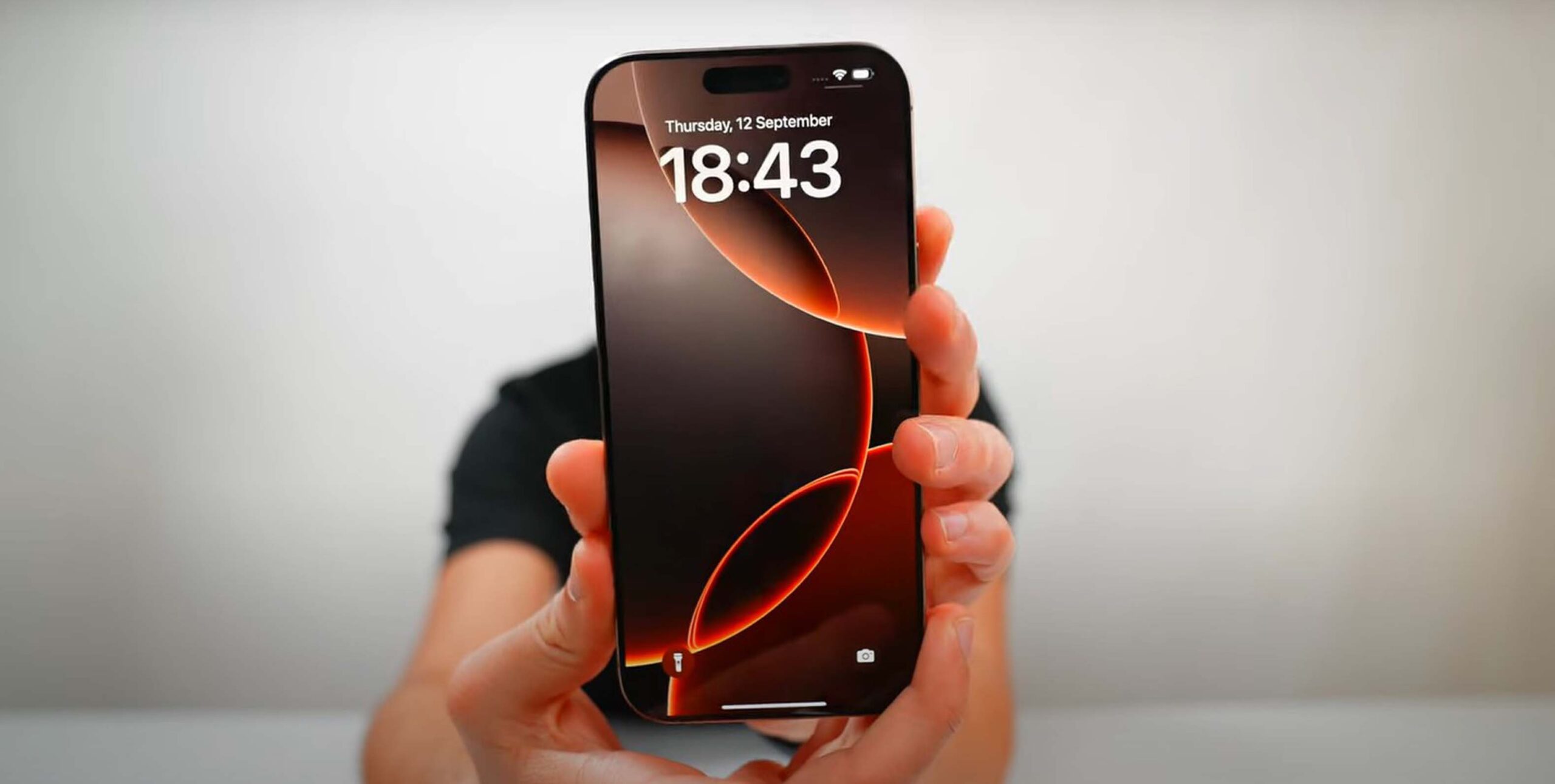
This is a big screen—6.9 inches—made possible by a slightly larger chassis and slimmer bezels. The iPhone 16 Pro Max has more pixels than the 15 Pro Max, coming in at 2868 x 1320 compared to last year’s 2796 x 1290. That’s a pixel increase, but no jump in pixel density—it’s still 460ppi, which falls short of the Samsung Galaxy S24 Ultra‘s 501ppi.
Apple hasn’t touched the Dynamic Island, which continues to be a useful information hub at the top of the screen, housing Face ID, depth sensors, and a 12MP TrueDepth camera. That camera, by the way, delivers stellar selfies and remains essential for biometric unlocking.
The display specs haven’t changed, but they’re still impressive. The iPhone 16 Pro Max offers a wide-color gamut, HDR, True Tone, always-on display, 2,000 nits of peak outdoor brightness, and ProMotion, which smoothly adjusts the refresh rate from 1Hz to 120Hz. This dynamic refresh rate makes everything from games to sports feel fluid.
Everything I did on the iPhone 16 Pro Max looked fantastic. The Dynamic Island pretty much disappears during gaming, and video streaming on Netflix doesn’t even acknowledge it, cropping out the cutout effortlessly.
Apple iPhone 16 Pro Max Software and Apple Intelligence
I know everyone (especially Apple) wants to talk about Apple Intelligence, but it’s the changes to the core iOS 18 platform that will have the biggest impact on your iPhone 16 Pro Max day-to-day use.
Photos, for instance, has undergone a massive overhaul, and one that I’m not entirely sure makes it better. It’s a bit of a “Who moved my cheese?” situation, as many of the familiar features have shifted or been replaced. The Photos app now defaults to Search and Collections, which might throw off people expecting to see their photo library. But if users get accustomed to natural language queries that yield useful image results, they could be pleasantly surprised.
The interface itself is more customizable than before, and one big change is that you can now leave spaces in your app grid. It’s not complete freedom—you’re still confined to the invisible grid system, so no dragging an app icon to hover awkwardly between two spots. Still, the added flexibility is a step in the right direction.
Apple also seems a little obsessed with summaries. Summarization tools pop up in several places, like Writing Tools and the newly updated Safari. There’s a Highlights feature in Safari now, though it’s somewhat hidden; you need to tap a tiny hamburger menu on the left side of the address bar. Once activated, it’ll reduce, say, a lengthy New Yorker article about Ronald Reagan down to a few sentences. It’s an impressive feature, though I do worry about important nuances getting lost in the process.
There’s even a new standalone Passwords app, which consolidates all the password management features that were previously buried inside Keychain. Having an easy-to-access app for managing security details is a welcome change, especially in a world where password confusion is a daily challenge.
One of my favorite new features in iOS 18 is Math Notes. You can scribble any equation in the Notes app using your finger or a stylus, and as soon as you add an equals sign, Math Notes will solve it for you. The answer appears in handwriting that mimics your own, a charming touch that combines machine learning with practical utility.
None of these updates are as headline-grabbing as Apple Intelligence, but they are more immediately useful for everyday tasks than the flashy AI features that might be more hype than substance for now.
As for Apple Intelligence, it’s not all there yet. At launch, iPhone 16 models have limited access to these new AI features, and the bulk of them will arrive with iOS 18.1 in October. Apple gave me early access to some of these tools with its blessing, and one of the most visible changes is with Siri.
Apple’s 13-year-old digital assistant has broken free from its floating bubble interface. Now, when you invoke Siri, it takes over the entire screen in a full, colorful glow. The effect is dramatic. When I pressed the power button or summoned Siri by name, the entire screen pulsed in response, making Siri feel more alive than ever before.
However, this may be the most exciting part of the AI update. While Siri looks more vibrant and handles conversational speech better, like recognizing “uhs” and “ums” without missing a beat, the deeper, more contextual AI features that Apple teased aren’t fully here yet. For instance, Siri still doesn’t access personal insights about you in a meaningful way, nor does it dig into third-party apps to enable features or actions beyond the basics.
It’s not a total wash. Siri handled everyday tasks with increased competence. It opened the FaceTime camera when I asked for a selfie and gave me a clear, step-by-step guide for sharing my Wi-Fi password. Siri also seems better at maintaining the context of a conversation. I asked where I was, and Siri displayed a map with my exact location. I followed up with a question about restaurants nearby, and without having to say “Siri” again, it pulled up a list of local options. Feeling bold, I asked, “What if I need a place to stay tonight?” This question seemed to confuse Siri, as it responded by asking if I needed emergency services. I tried again, and it repeated the same odd response. So, while Siri is sharper, it’s still not flawless.
Another new Siri feature I appreciated was “Text to Siri.” With three quick taps at the bottom of the screen, I could open a discreet window to type my Siri request. It’s a great way to interact with Siri when you’re in a place where speaking out loud isn’t ideal.
Writing Tools, which show up in apps like Notes, Mail, and Messages, offer helpful suggestions to make your writing more professional, concise, or friendly. As someone who feels confident in my writing, I didn’t find these AI-powered suggestions particularly appealing. However, I imagine there are plenty of people who will appreciate the assist, especially since Writing Tools never misinterpret or alter the original meaning of your text, which is an impressive feat for AI.
Photos is where Apple Intelligence truly shines. The new Clean Up tool, found in the editing options, is remarkably effective at removing unwanted objects from your pictures. When I opened a photo and tapped the Clean Up eraser icon, the AI immediately suggested removing a few people from the background of my shot. I opted to keep them but used the tool to remove an object instead. The precision of my selection didn’t need to be perfect; the AI figured out the rest. I tested it further by removing cars from the background of a photo taken at an outdoor restaurant, and Clean Up did a pretty seamless job.
That said, Apple Intelligence still feels limited when compared to competitors like Google Gemini and Samsung’s Galaxy AI. Siri, in particular, doesn’t have the versatility of a full-scale large language model. You can’t ask it the breadth of questions you would with something like ChatGPT or expect it to generate images like MidJourney. Even the promised Genmojis haven’t arrived yet, and Siri remains locked to English. Furthermore, the third-party integrations with tools like ChatGPT and Gemini, which could offer a massive AI boost, are nowhere to be found at launch.
In short, this version of Apple Intelligence feels like a solid step forward, but it’s not the revolutionary upgrade that will drive millions of people to rush out and buy an iPhone 16. It’s a good start, but Apple’s AI needs a few more updates before it’s truly game-changing.
Apple iPhone 16 Pro Max Camera
Apple hasn’t drastically altered the iPhone’s camera array, but subtle hardware, software, and image processing tweaks, along with the addition of the Camera Control button, make the iPhone 16 Pro Max’s imaging system feel fresh. Despite a single standout megapixel upgrade, namely the 48MP ultrawide camera, which enhances wide-angle and macro shots, the impact feels more evolutionary than revolutionary—especially when you compare the iPhone 15 Pro Max’s settings against this new model. Yet, this 48MP sensor delivers noticeable improvements, and macro photography benefits from it as well. However, the jump in image quality may feel more like a step rather than a leap, depending on how you use it.
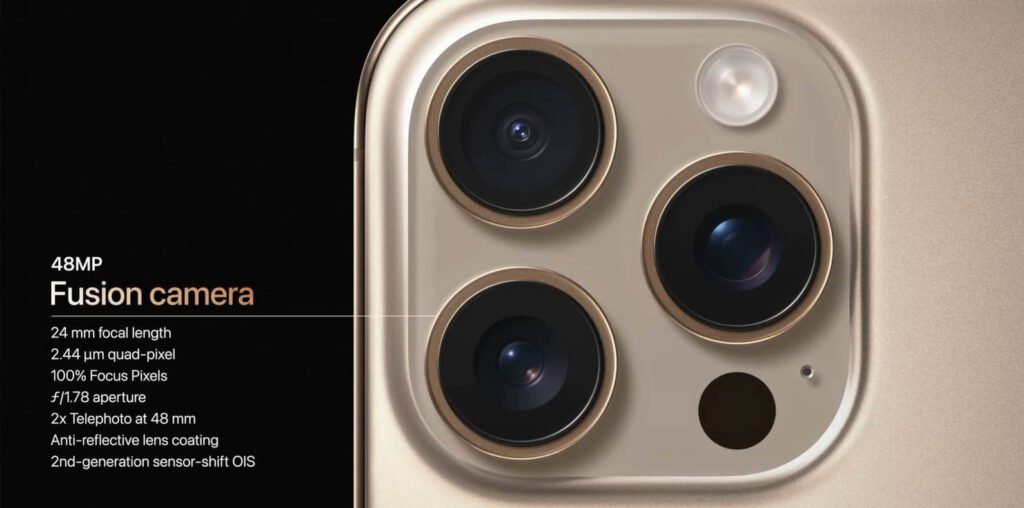
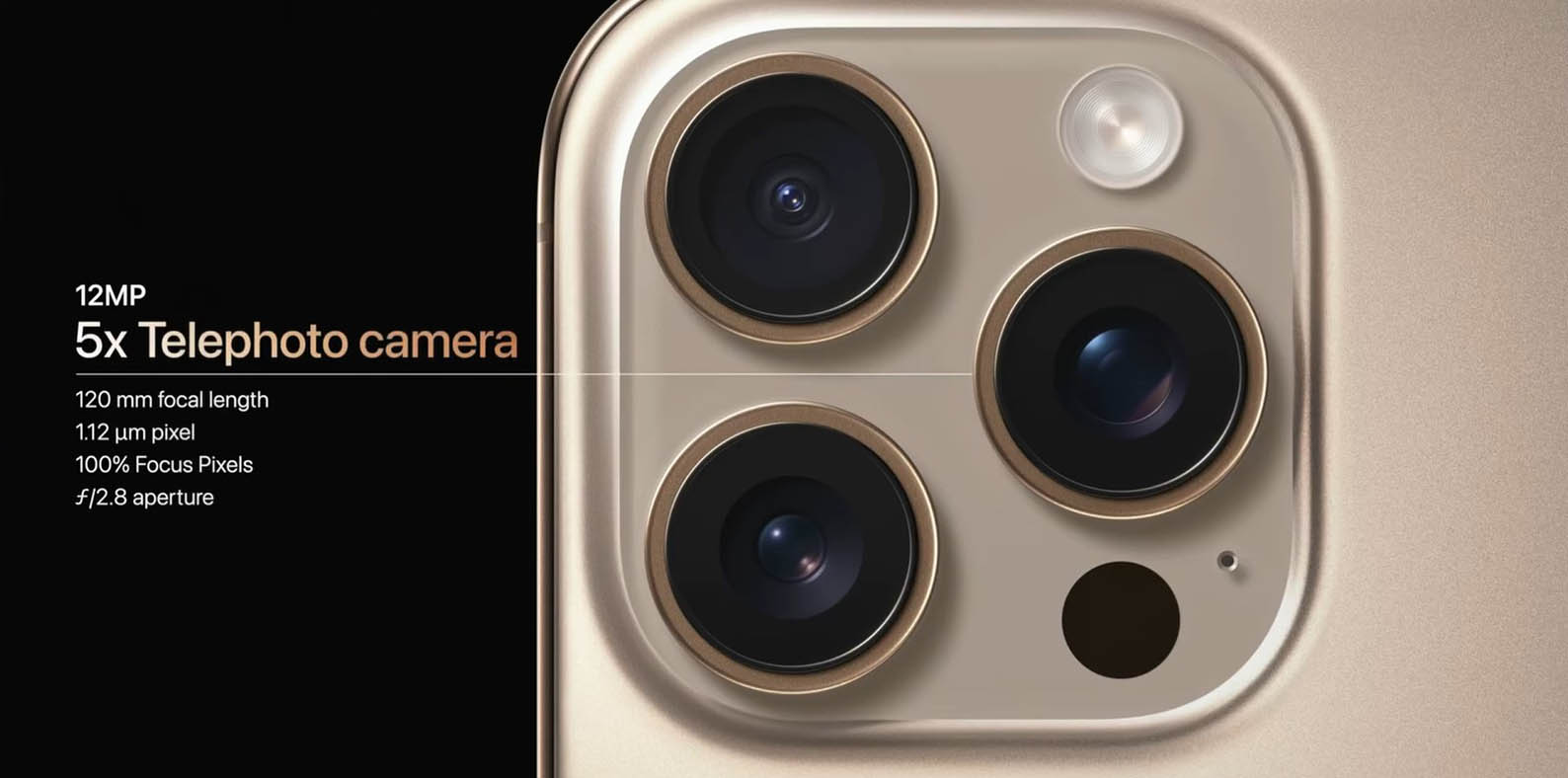
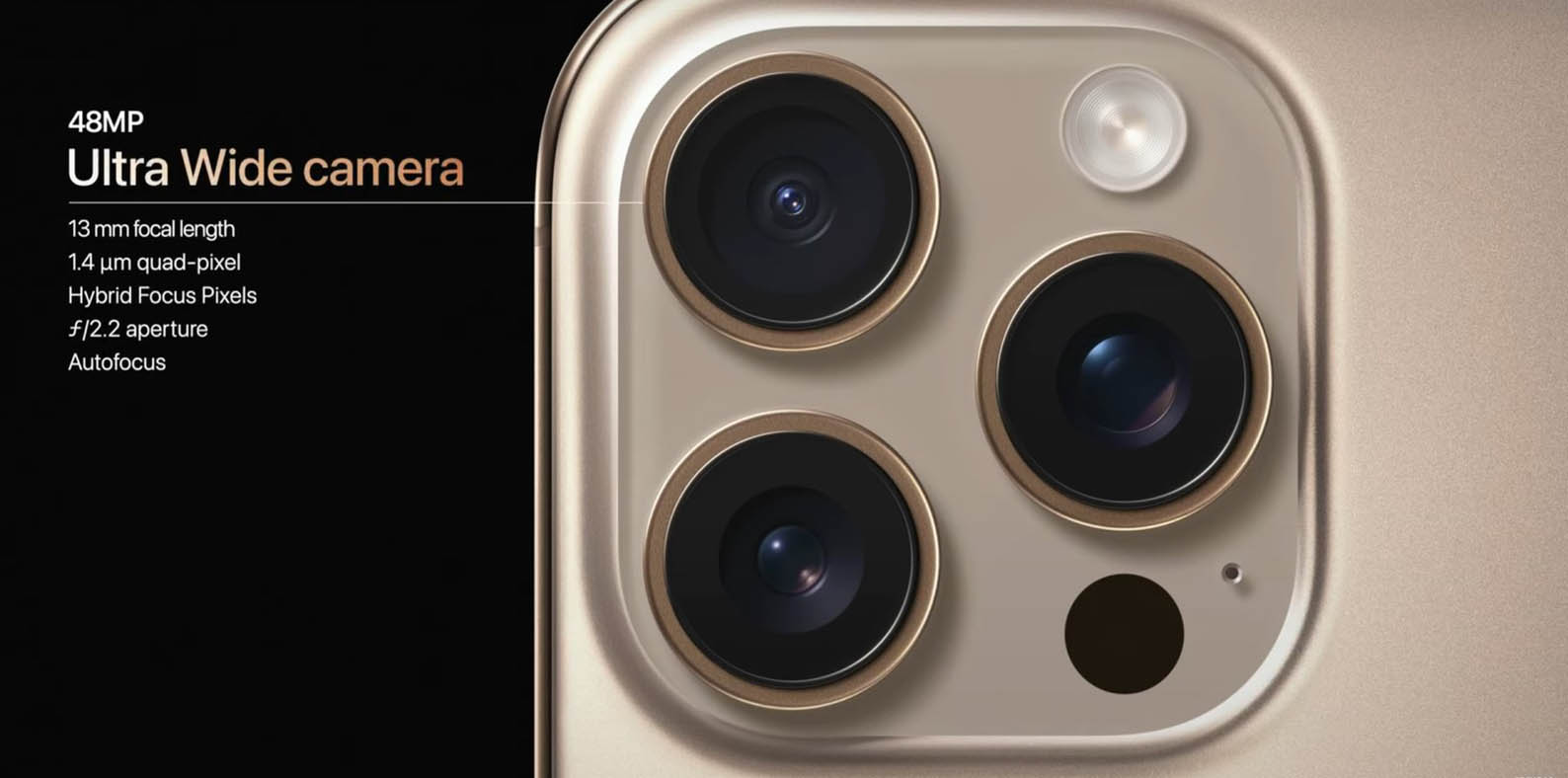
While Apple didn’t inflate the pixel count for the main camera, it did improve the sensor, promising faster shutter speeds. Autofocus now includes dual autofocus sensors, the kind of incremental change that should enhance both user experience and image quality. Though hard to measure, these enhancements make the main camera sensor better, but perhaps not in a way that’s immediately obvious.
The 12MP 5x optical zoom remains essentially unchanged from the iPhone 15 Pro Max, and the big zoom-related news actually belongs to the iPhone 16 Pro, which now includes the tetraprism lens that was previously exclusive to the Pro Max. Meanwhile, the 12MP FaceTime camera remains the same as last year’s model.
Apple made some notable updates in video and audio capabilities. The iPhone 16 Pro Max doesn’t shoot in 8K, and while that might not be a big loss for most users, it does now support 4K at 120fps, alongside new Audio Mix tools. The term “cinematic slow motion” was introduced at the unveiling, sounding like a new video mode, but it’s really just 4K 120fps video with options to slow footage down. While the Cinematic mode is still available, the 4K 120fps enables slow-motion video that can be modified to create stunning cinema-quality effects.
Using the Speed Control feature, which appears as a new clock icon in the editing tools, I experimented with slowing video footage to 24fps, 30fps, 60fps, and back to 120fps. The ability to step through these different speeds makes ordinary clips feel like they’ve been lifted from a blockbuster. The smoothness of the slowed-down footage—thanks to shooting in such high resolution—was impressive.
Audio Mix is another welcome addition that enhances audio quality. I tested it in an office environment, recording my voice despite the ambient noise of an overhead fan. The result was nearly podcast-quality audio, though with a slight hint of over-processing. Still, it’s useful when you don’t have a dedicated microphone on hand. In-frame audio mix hones in on the audio source within the frame and does a good job of filtering out background sounds. I tested this by speaking out of frame while recording a conversation happening on an iPad, and when I activated In-frame Mix, my voice faded into the background, as intended. It’s not perfect, but it’s an impressive tool for cleaner audio, especially when you’re dealing with unwanted background noise in a studio setting.
If you’re counting cameras, the iPhone 16 Pro Max has four, yet Apple claims it has seven lenses. They do this by counting different focal lengths, which is a standard practice among professional photographers. These range from a macro lens to a 120mm zoom lens, with various stops in between like 13mm ultrawide, 24mm, 28mm, 35mm, 48mm, and the 2x zoom. This approach makes sense for prosumer-level users who are accustomed to switching between lenses, and it offers a lot of versatility in shot composition.
I tried out the faster shutter speed improvements by photographing a fan in motion, as well as a group of pigeons mid-flight. While all three phones I tested—iPhone 16 Pro Max, iPhone 16 Pro, and iPhone 15 Pro—handled the fan blades well, the newer models had a slight edge when it came to capturing sharper details during motion. With the iPhone 16 Pro Max, the blades were frozen almost perfectly, and the pigeons’ wings were crisp without motion blur. Macro photography saw marginal improvements over the iPhone 15 Pro Max. When I shot in 48MP HIEF raw on both, the difference was negligible, which speaks to how solid the macro capabilities were already on the previous generation.
Baseline photography across all the iPhone 16 Pro Max’s cameras is consistently excellent, with sharpness and color fidelity that are hard for competitors to match. Low-light performance was also solid, producing some of the best night sky shots I’ve ever taken with an iPhone. Deep shade photos retained clarity and detail, and even astrophotography felt more refined with this iteration.
On the image styling front, Apple introduces Skin Undertones and a range of Moods. Undertones tweak skin colors while keeping the rest of the image relatively untouched, though I found they do affect the broader image slightly. There are options like Amber, Rose Gold, Neutral, and Cool Rose, and you can apply these either during or after capture. Meanwhile, the Moods feature, which you access by swiping left in the camera app, adjusts the overall look of your image. These new stylistic controls are housed within a grid-based interface that allows for fine adjustments, though I’m not sure everyone will need this level of control. It might appeal more to fashion photographers or influencers, but for me, capturing people as they are feels more important than playing with undertones. I can see, though, how some might enjoy these tools for creative expression.
The real game-changer in this iPhone’s photography system, however, is the new Camera Control button. Positioned on the long side of the phone, it offers touch-sensitive controls with haptic feedback. Enclosed in a ring of metal with a sapphire cover, the button sits slightly recessed, so it feels natural when holding the phone in landscape mode. A press of the button when the phone is locked opens the camera, while another press captures a photo. If the phone is asleep, it takes three presses.
A lighter touch triggers haptic feedback and opens the camera controls in a small overlay on the screen. Swiping across the button cycles through zoom levels, lens choices, exposure settings, and depth of field. You can dig deeper into camera settings with a double-press, allowing access to features like Moods and Undertones. Camera Control even remembers your last-used settings, making it a convenient tool for frequent shooters.
In landscape mode, this button helps make the iPhone feel more like a professional camera. The only thing it lacks is a feature that lets you half-press to focus and fully press to capture, similar to dedicated cameras. Apple has said this is coming in a future update, which will make Camera Control even more intuitive.
One thing I found curious was how awkward Camera Control feels when holding the phone vertically. Given how much social media content is shot in portrait mode, I wonder how often influencers or regular users will utilize the button. It’s great for landscape photography, but perhaps less so for TikTok videos or Instagram shots. Still, it might just encourage more people to shoot in landscape mode.
Camera Control’s versatility extends beyond photography. Holding the button activates video capture, defaulting to your last-used video quality. It can even be customized to launch different apps, such as the QR Code scanner or Magnifier. This customization, combined with the range of third-party apps that will undoubtedly incorporate Camera Control, makes it a versatile tool beyond just snapping photos.
The iPhone 16 Pro Max also retains a cool feature from last year’s Pro models: the ability to capture spatial photos and videos. This uses the 5x and ultrawide lenses to record stereo imagery, giving photos and videos a 3D effect when viewed through Apple’s Vision Pro headset. The effect is impressive in the right setting, but it’s only useful if you have a VR headset. How many people have one of those?
Apple iPhone 16 Pro Max Performance
The iPhone 16 Pro Max, powered by the new A18 Pro SoC, is a powerhouse. It easily outperforms both the A17 Pro and Qualcomm’s Snapdragon 8 Gen 3 in most benchmarks, and while Apple sticks with 8GB of RAM (less than the 12GB found in competitors like the Google Pixel 9 or Samsung Galaxy S24 Ultra), the device makes excellent use of its available memory. The performance is nothing short of impressive, handling everything from routine tasks to demanding applications like 4K video editing and console-level gaming with ease.
Apple Silicon has long been known for delivering desktop-grade power in mobile devices, and the A18 Pro keeps this tradition alive. The inclusion of iOS 18’s Game Mode elevates gaming by prioritizing game-related processes, creating a smoother and more immersive experience. During my testing, I found it difficult to push this phone beyond its limits, although it did get noticeably warm when running graphically intensive games like Death Stranding or while editing video in Capcut. Unfortunately, I encountered some issues with Adobe Premiere, as it couldn’t handle videos shot on the iPhone. Despite the warmth, the phone maintained its performance and battery life, thanks in part to its graphite-covered aluminum frame, which seems to manage heat well.
Connectivity is another strong point for the iPhone 16 Pro Max, with Wi-Fi 7, Bluetooth 5.3, and second-generation Ultrawideband all included. The latter improves the Find My app experience, which came in handy when I needed to locate my AirPods 4. As for cellular capabilities, Apple’s decision to go eSIM-only in the US is a welcome change for me, although not everyone will agree. The phone’s eSIM functionality allows for quick switching between multiple numbers, which can be a huge convenience for frequent travelers or people managing multiple lines.
One of the standout features of this year’s iPhone is its enhanced satellite services. In addition to Emergency SOS, which now lets you send not just text but also photos and videos to emergency services, Apple has introduced non-emergency satellite texting. You can now send and receive texts via satellite even when you’re outside cellular coverage. Though I didn’t encounter a dead zone during my review, the phone did offer me the option to share my location via satellite while on a flight. The satellite service remains free for the first two years of ownership, adding even more value to an already feature-packed phone.
Apple iPhone 16 Pro Max Battery
The iPhone 16 Pro Max delivered some of the best battery-drain results I’ve seen in Future Labs testing. On average, it lasted about 16 hours, and in real-world use, I saw between 14 and 17 hours depending on my activity. That’s seriously impressive for a smartphone.
Apple has finally adopted Qi-2 wireless charging, and they sent me a Qi-2 compatible MagSafe charger along with a 30W charge adapter. While the iPhone 16 series includes a 60W-capable USB-C cable, it doesn’t come with a charging adapter in the box. With the MagSafe charger and 30W adapter, I was able to charge the iPhone 16 Pro Max to 44% in just 30 minutes. Apple’s claim of 50% in that time isn’t far off. A full charge took around two hours. A neat feature is that you can use a standard USB-C cable to charge your AirPods or Apple Watch directly from the iPhone, which I tested, and it works perfectly.
Apple also seems to be making progress on the Right to Repair front. They’ve simplified battery replacements in the iPhone 16 line by replacing the stretch-release adhesives with ionic liquid adhesive. This adhesive reacts to a low-voltage current, like from a 9v battery, and releases the battery from the phone’s enclosure. I’m not sure if this will allow more consumers to replace their own batteries or just make the process easier for Apple techs, but it’s definitely a step in the right direction. I’m eager to see how this new battery replacement method works in practice.
Apple iPhone 16 Pro Max Score Card
| Attributes | Notes | Rating |
|---|---|---|
| Value | A bigger phone with even more power and intelligence that holds the line on pricing | 4 / 5 |
| Design | Iconic design with premium materials and a new hardware feature | 5 / 5 |
| Display | Larger display, resolution remains unchanged. Still among the best displays on smartphones | 4.5 / 5 |
| Software | iOS 18 comes with useful updates and a few major changes. Apple Intelligence shows promise | 4 / 5 |
| Camera | Significant sensor updates with notable improvements in image processing and controls | 4.5 / 5 |
| Performance | A18 Pro chip offers more power than most need, ensuring top-tier performance | 5 / 5 |
| Battery | Excellent battery life with faster wireless charging speeds | 4.5 / 5 |
Apple’s iPhone 16 and 16 Pro lineup
| Feature | Apple iPhone 16 | Apple iPhone 16 Plus | Apple iPhone 16 Pro | Apple iPhone 16 Pro Max |
|---|---|---|---|---|
| Display Size, Tech, Resolution, Refresh Rate | 6.1-inch OLED Super Retina XDR; 2556 x 1179 px | 6.7-inch OLED Super Retina XDR; 2796 x 1290 px | 6.3-inch OLED Super Retina XDR; 2622 x 1206 px | 6.9-inch OLED Super Retina XDR; 2868 x 1320 px |
| Pixel Density | 460 ppi | 460 ppi | 460 ppi | 460 ppi |
| Dimensions (inches) | 5.81 x 2.82 x 0.31 in | 6.33 x 3.06 x 0.31 in | 5.89 x 2.81 x 0.32 in | 6.42 x 3.06 x 0.32 in |
| Dimensions (millimeters) | 147.6 x 71.6 x 7.8 mm | 160.9 x 77.8 x 7.8 mm | 149.6 x 71.5 x 8.25 mm | 163 x 77.6 x 8.25 mm |
| Weight | 170 g / 6 oz | 199 g / 7.03 oz | 199 g / 7.03 oz | 227 g / 7.99 oz |
| Mobile Software | iOS 18 | iOS 18 | iOS 18 | iOS 18 |
| Camera | 48MP (wide), 12MP (ultrawide) | 48MP (wide), 12MP (ultrawide) | 48MP (wide), 48MP (ultrawide), 12MP (5x telephoto) | 48MP (wide), 48MP (ultrawide), 12MP (5x telephoto) |
| Front-Facing Camera | 12MP | 12MP | 12MP | 12MP |
| Video Capture | 4K at 60fps, spatial video at 1080p at 30fps | 4K at 60fps, spatial video at 1080p at 30fps | 4K at 120fps, spatial video at 1080p at 30fps | 4K at 120fps, spatial video at 1080p at 30fps |
| Processor | A18 | A18 | A18 Pro | A18 Pro |
| RAM/Storage Options | 128GB, 256GB, 512GB | 128GB, 256GB, 512GB | 128GB, 256GB, 512GB, 1TB | 256GB, 512GB, 1TB |
| Expandable Storage | No | No | No | No |
| Battery Life | Up to 22 hours video playback, up to 18 hours streaming. 20W wired charging. MagSafe wireless charging up to 25W with 30W adapter or higher; Qi2 up to 15W | Up to 27 hours video playback, up to 24 hours streaming. 20W wired charging. MagSafe wireless charging up to 25W with 30W adapter or higher; Qi2 up to 15W | Up to 27 hours video playback, up to 22 hours streaming. 20W wired charging. MagSafe wireless charging up to 25W with 30W adapter or higher; Qi2 up to 15W | Up to 33 hours video playback, up to 29 hours streaming. 20W wired charging. MagSafe wireless charging up to 25W with 30W adapter or higher; Qi2 up to 15W |
| Fingerprint Sensor | None (Face ID) | None (Face ID) | None (Face ID) | None (Face ID) |
| Connector | USB-C | USB-C | USB-C | USB-C |
| Headphone Jack | No | No | No | No |
| Special Features | Apple Intelligence, Action button, Camera Control button, Dynamic Island, 1 to 2,000 nits display brightness, IP68 resistance. Colors: black, white, pink, teal, ultramarine. | Apple Intelligence, Action button, Camera Control button, Dynamic Island, 1 to 2,000 nits display brightness, IP68 resistance. Colors: black, white, pink, teal, ultramarine. | Apple Intelligence, Action button, Camera Control button, 4x audio mics, Dynamic Island, 1 to 2,000 nits display brightness, IP68 resistance. Colors: black titanium, white titanium, natural titanium, desert titanium. | Apple Intelligence, Action button, Camera Control button, 4x audio mics, Dynamic Island, 1 to 2,000 nits display brightness, IP68 resistance. Colors: black titanium, white titanium, natural titanium, desert titanium. |
| US Price | Starting at $799 (128GB), $899 (256GB), $1,099 (512GB) | Starting at $899 (128GB), $899 (256GB), $1,199 (512GB) | Starting at $999 (128GB), $1,099 (256GB), $1,299 (512GB), $1,499 (1TB) | Starting at $1,199 (256GB), $1,399 (512GB), $1,599 (1TB) |
| UK Price | Starting at £799 (128GB), £899 (256GB), £1,099 (512GB) | Starting at £899 (128GB), £999 (256GB), £1,199 (512GB) | Starting at £999 (128GB), £1,099 (256GB), £1,299 (512GB), £1,499 (1TB) | Starting at £1,199 (256GB), £1,399 (512GB), £1,599 (1TB) |
| Australia Price | Starting at AU$1,399 (128GB), AU$1,599 (256GB), AU$1,949 (512GB) | Starting at AU$1,599 (128GB), AU$1,799 (256GB), AU$2,149 (512GB) | Starting at AU$1,799 (128GB), AU$1,999 (256GB), AU$2,349 (512GB), AU$2,699 (1TB) | Starting at AU$2,149 (256GB), AU$2,499 (512GB), AU$2,849 (1TB) |
Apple iPhone 16 Pro Max Also consider
Google’s Pixel 9 Pro may be the most AI-driven phone to date, thanks to the power of Google Gemini. With its advanced AI camera features and intelligence tricks, the Pixel 9 Pro brings innovation to every interaction. The sleek design and solid performance make it a compelling choice, especially if you’re ready to step away from iOS.
If a foldable iPhone feels like a dream, the Samsung Galaxy Z Fold 5 might be the next best thing. This cutting-edge device combines a premium design with excellent cameras, a spacious folding display, and stylus support. It’s more expensive than most, but the flexibility and pro-level features might make it worth your while.
For Android enthusiasts seeking the ultimate experience, the Samsung Galaxy S24 Ultra is hard to beat. With its massive display, incredible performance, and the convenience of a hidden stylus, it stands out as the best Android phone available. The S24 Ultra even incorporates Samsung’s Galaxy AI, enhancing usability. If you’re willing to leave the iOS ecosystem behind, this phone offers the perfect blend of power and functionality.
Conclusion
iPhone 16 Pro Max excels with its A18 Pro SoC, outperforming rivals despite having 8GB of RAM compared to the Pixel 9 and Galaxy S24 Ultra’s 12GB. It handles everything from productivity to gaming and 4K video editing, though it can get warm under heavy use. New features like Wi-Fi 7, Bluetooth 5.3, and enhanced satellite services further future-proof the device, while its eSIM-only setup makes switching numbers easier.
Battery life impresses, with up to 17 hours on a charge, and the Qi-2 wireless charging supports quick recharges. Apple also introduces easier battery replacement with ionic liquid adhesive.
For Android alternatives, the Pixel 9 Pro offers AI innovation, the Galaxy Z Fold 5 shines with its foldable design, and the Galaxy S24 Ultra boasts top-tier performance and display, making these strong contenders if you’re stepping away from iOS.


